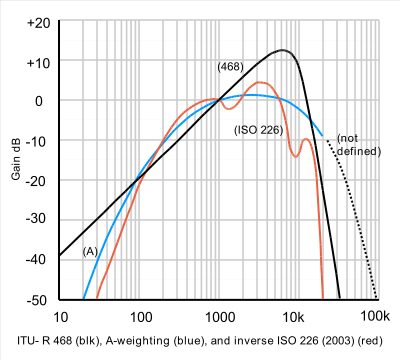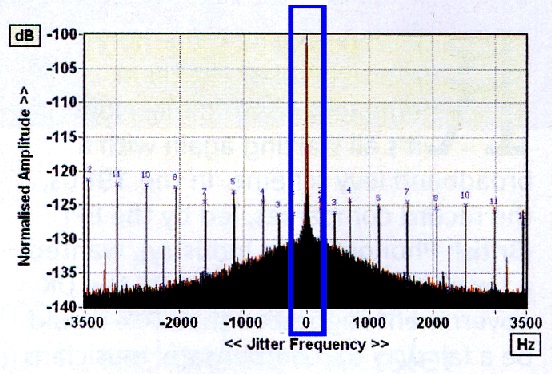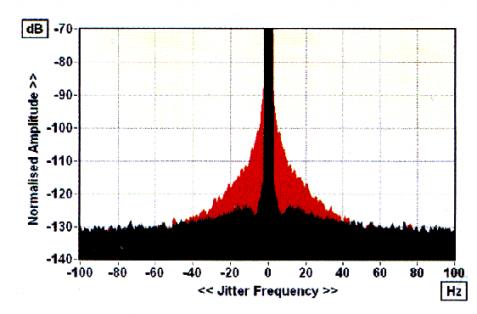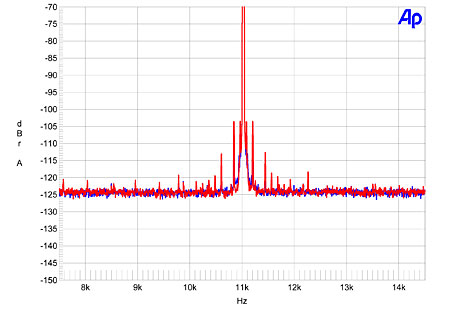There's a spin-off thread started on ASR after Mivera's posts about it on another thread which was closed down & I wished to give my views on it here (as I'm banned from ASR) & possibly advance the topic beyond the blinkered mindset on display on ASR.
First off this is not covered in any AES paper so is anathema to the mindset on ASR
The question is why is close-in phase noise perceptually noticeable? I have tested this myself & can concur with the perceptions of Mivera & others who have heard such low phase noise clocks, in well implemented systems - it results in more clarity to individual sounds & more 3D soundstage. When power supplies are low noise & stable it gives results of the same type. When USB isolation is properly done it gives more of the same results. These changes are additive, not mutually exclusive.
So my logic leads me to consider if there are similar underlying mechanisms at play which might be resulting in this almost exactly similar audible improvements?
What could this be?
Well some clues are given by none other than Amir, although he isn't even aware of it - "Vast majority of close-in jitter is random and hence manifests itself as simple increase of noise floor."
The problem here is that he doesn't think through what he's saying - he's looking at a single tone & close-in phase noise. So what happens with modulating signals (i.e. music) - this would result in modulating noise floor in between the the signal fundamentals & in between the signal harmonics i.e. all the spikes that would be seen on an FFT of real music would have the noise floor modulating as the signals continually changed.
So when someone says it's random, they really don't understand what the term random means & dismissing it based on a lack of understanding.
Another major gaff of his from the same post - "It is also massively masked as I post in the other thread.". Is noise floor "masked" by signal? That's the first time I ever heard this claim. Not to mention modulating noise floor.
Perceptually noise is perceived differently to signal as it is a broadband signal which spans across the frequency bands into which the hearing mechanism divides the signal. When the energy in a waveform crosses these frequency bands (called ERBs or Equivalent Rectangular Bandwidth) it has repercussions in perception. Just as a simple illustration - there is a just noticeable difference graph for noise which is very different to the JNDs seen on the Fletcher-Munson plots for signals. The plot for noise perception comes originally from the BBC research dept & differs by 12dB in places from F-M curves & our max sensitivity is at different frequencies
So rather than trotting out hackneyed words such as "random" & "masking" without any thought, I wanted to open up a real discussion here
First topic - how to correctly interpret the FFTs for close in phase noise. A perfect signal on an FFT would be a razor thing signal line with no width to it i.e the signal is always at the exactly correct frequency. If the FFT of a signal with close-in phase noise is zoomed into, the signal plot has width to the line i.e it is not a single frequency but spreads out both sides of the fundamental frequency. Sometimes the signal is +/- 0.1Hz away from what it should be, sometimes +/- 0.5Hz, sometimes 1Hz & so on. The drop off in the plotted slope as it moves away from the central peak is an indication of how often the signal is found at the wrong frequency - it drops off the further away from the peak is plotted.
So what does this FFT tell us - does it tell us that the phase noise is jittering the frequency at almost the same level as the main signal? What is the perceptual result of such jittering of frequency? Again one has to think about this carefully - if you play a 11KHz tone together with an almost equally loud 11.1Khz tone, is it masked? Probably in a listening test. Now if we combine a number of 11KHz signals paired with various other tones of almost the same loudness but slipped in frequencies - some +1Hz, some -1Hz, some at other frequencies - will this be perceived differently to a single pure 11KHz tone? Now do this with real music - take a copy of the waveform, reduce the amplitude slightly & shift some frequencies by 0.1Hz, some by 0.5Hz, some by 1hz, etc. Play both waveforms back on a device which hasn't got internal jitter which drowns out any possible audible effect & check for audibility
First off this is not covered in any AES paper so is anathema to the mindset on ASR
The question is why is close-in phase noise perceptually noticeable? I have tested this myself & can concur with the perceptions of Mivera & others who have heard such low phase noise clocks, in well implemented systems - it results in more clarity to individual sounds & more 3D soundstage. When power supplies are low noise & stable it gives results of the same type. When USB isolation is properly done it gives more of the same results. These changes are additive, not mutually exclusive.
So my logic leads me to consider if there are similar underlying mechanisms at play which might be resulting in this almost exactly similar audible improvements?
What could this be?
Well some clues are given by none other than Amir, although he isn't even aware of it - "Vast majority of close-in jitter is random and hence manifests itself as simple increase of noise floor."
The problem here is that he doesn't think through what he's saying - he's looking at a single tone & close-in phase noise. So what happens with modulating signals (i.e. music) - this would result in modulating noise floor in between the the signal fundamentals & in between the signal harmonics i.e. all the spikes that would be seen on an FFT of real music would have the noise floor modulating as the signals continually changed.
So when someone says it's random, they really don't understand what the term random means & dismissing it based on a lack of understanding.
Another major gaff of his from the same post - "It is also massively masked as I post in the other thread.". Is noise floor "masked" by signal? That's the first time I ever heard this claim. Not to mention modulating noise floor.
Perceptually noise is perceived differently to signal as it is a broadband signal which spans across the frequency bands into which the hearing mechanism divides the signal. When the energy in a waveform crosses these frequency bands (called ERBs or Equivalent Rectangular Bandwidth) it has repercussions in perception. Just as a simple illustration - there is a just noticeable difference graph for noise which is very different to the JNDs seen on the Fletcher-Munson plots for signals. The plot for noise perception comes originally from the BBC research dept & differs by 12dB in places from F-M curves & our max sensitivity is at different frequencies

So rather than trotting out hackneyed words such as "random" & "masking" without any thought, I wanted to open up a real discussion here
First topic - how to correctly interpret the FFTs for close in phase noise. A perfect signal on an FFT would be a razor thing signal line with no width to it i.e the signal is always at the exactly correct frequency. If the FFT of a signal with close-in phase noise is zoomed into, the signal plot has width to the line i.e it is not a single frequency but spreads out both sides of the fundamental frequency. Sometimes the signal is +/- 0.1Hz away from what it should be, sometimes +/- 0.5Hz, sometimes 1Hz & so on. The drop off in the plotted slope as it moves away from the central peak is an indication of how often the signal is found at the wrong frequency - it drops off the further away from the peak is plotted.
So what does this FFT tell us - does it tell us that the phase noise is jittering the frequency at almost the same level as the main signal? What is the perceptual result of such jittering of frequency? Again one has to think about this carefully - if you play a 11KHz tone together with an almost equally loud 11.1Khz tone, is it masked? Probably in a listening test. Now if we combine a number of 11KHz signals paired with various other tones of almost the same loudness but slipped in frequencies - some +1Hz, some -1Hz, some at other frequencies - will this be perceived differently to a single pure 11KHz tone? Now do this with real music - take a copy of the waveform, reduce the amplitude slightly & shift some frequencies by 0.1Hz, some by 0.5Hz, some by 1hz, etc. Play both waveforms back on a device which hasn't got internal jitter which drowns out any possible audible effect & check for audibility



















